Sometimes you find a honey pot, a shallow hollow next to a ledge, you may even find one or two lead weights in full sight. On further investigation and a bit of digging, you find this to be a site that has been snagging sinkers for decades, layers upon layers of sinkers. Every time you dig a bit deeper thinking surely you found the bottom another sinker is revealed.
Of course, this is messy work, loosening the top layer of the mud and waiting for the current to gift you with clear water to see what you unearthed. It’s exhilarating, feels like you are hunting for treasures.
Because we dive where people fish, there is always a risk of being caught yourself. Fishermen sometimes don’t understand, honour or care about a dive flag, I was once caught on the flag that I pulled behind me and the fisherman kept trying to reel in his hook even after I surfaced. I have been caught 4 times so far by a fisherman, I am a mighty big fish to hook though, and one that shouts at you.
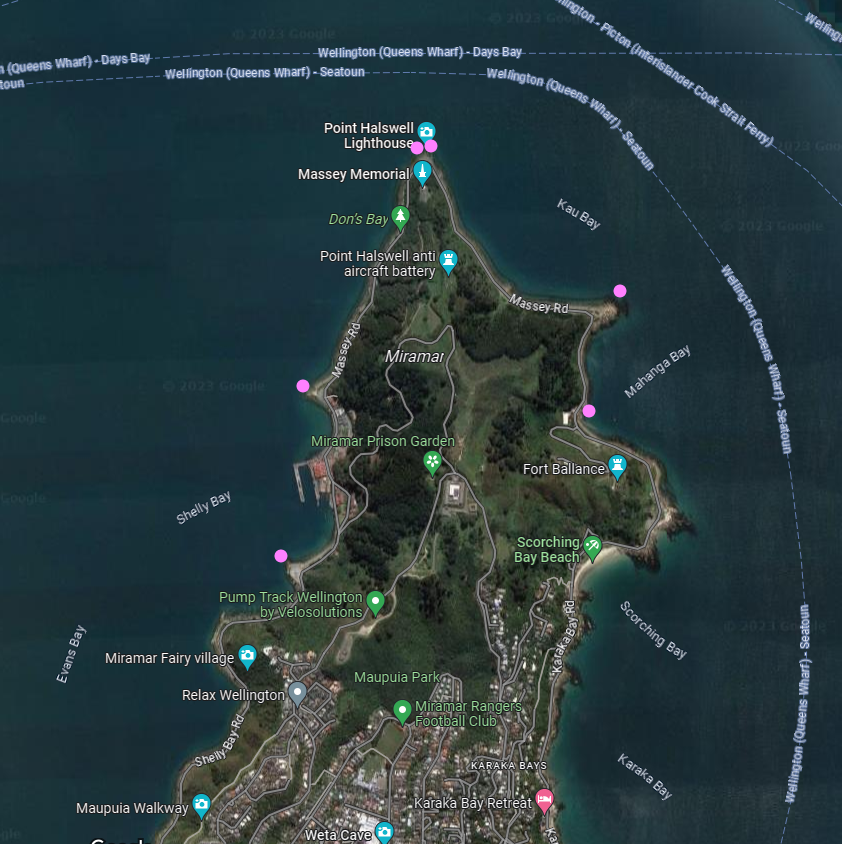
Most of the sinkers we find are shallower than 8m.
So far (September 2023) we have pulled around 900kg of lead out of Wellington Harbour, mostly focusing on a few spots around Miramar Peninsula including Flat Rock, Shelly Point, Point Halswell Lighthouse, Kau Point & Mahanga Bay.
Because we target fishing lines and sinkers, we can collect a lot of it at a time, our record is around 27kg on one dive – that was either Shelly Point or Flat Rock. This additional weight is not easy to just carry whilst scuba diving, and a better system needs to be found. I take a small flexi bucket with me, rigged up so I can easily attach a lift bag when it gets too heavy. Instead of fully inflating my lift bag, I add just enough air to lighten the load enough for me to still lift it off the bottom, but for it not to float away. This creates a great deal of drag, but luckily, I don’t move too fast underwater. It also acts as a great marker point for my buddy to always know where I am in the big clouds of ‘dust’ that often surround me. My buddy dives with a normal catch bag and we have devised a habit of stuffing most of the line in the bag as it just floats out of the bucket.
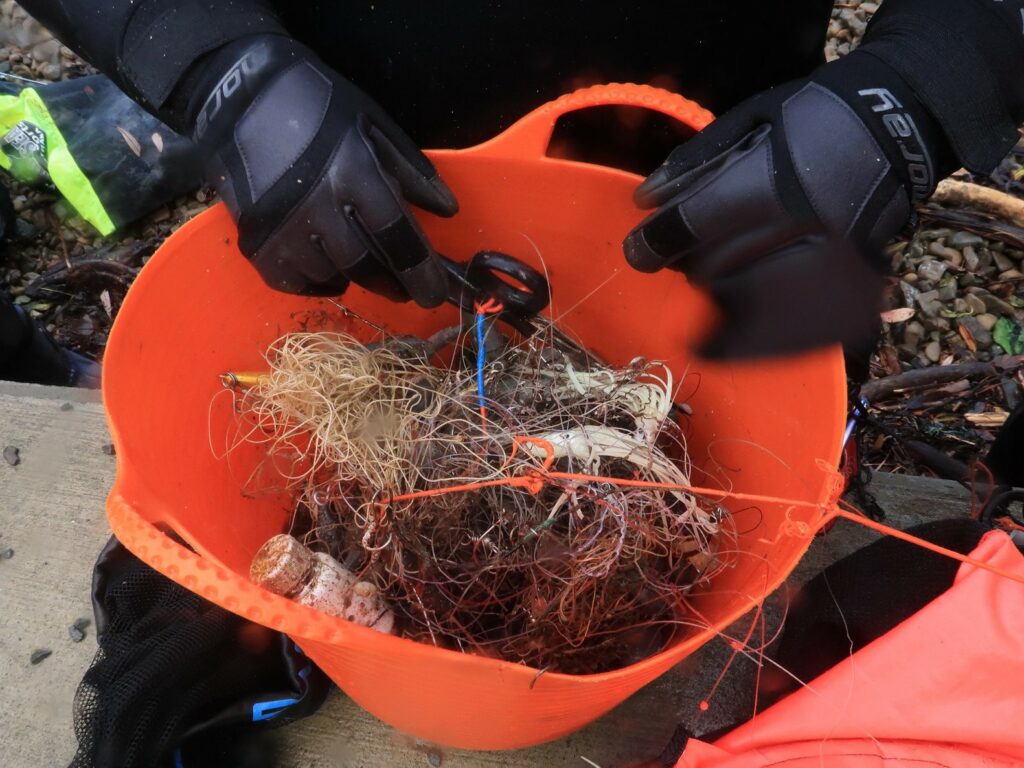
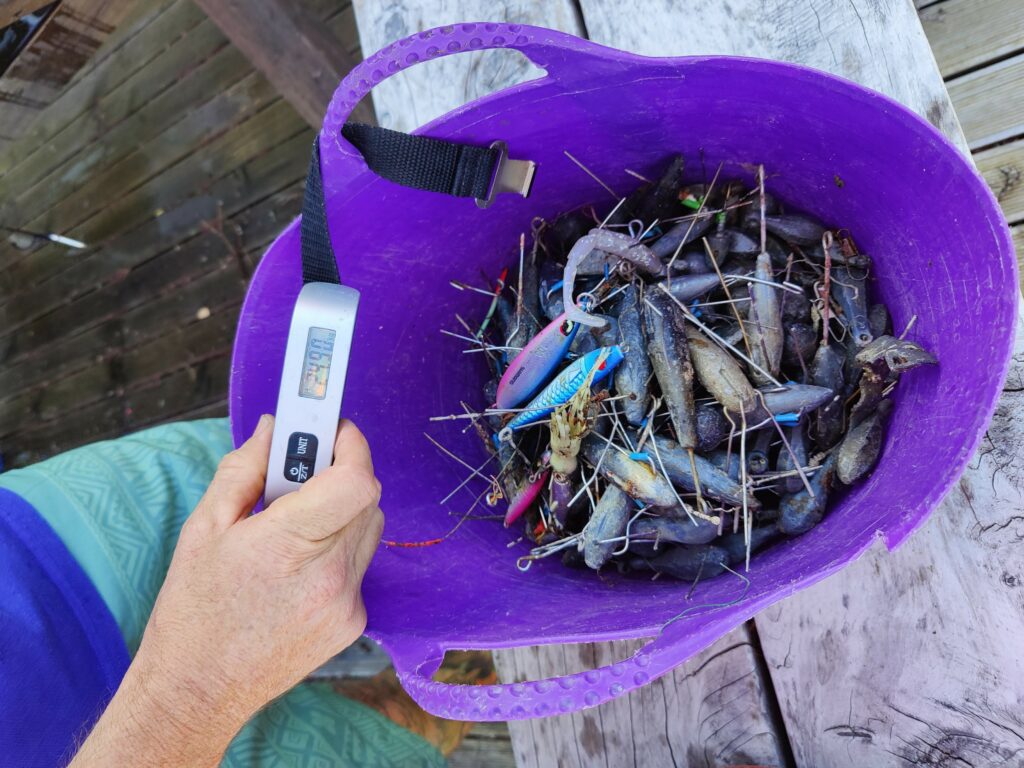
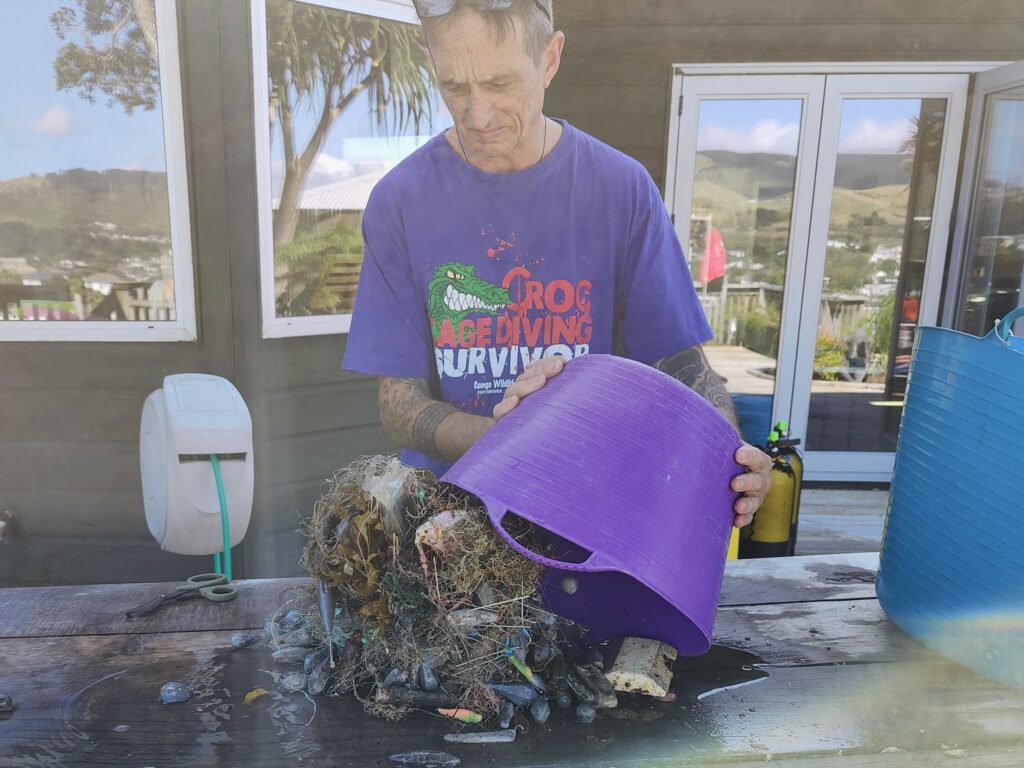
I love it when the fisheries inspectors stop by to check our ‘catch’. The bucket is often full of colourful lures, spinners and other interesting creatures people use to attract fish.
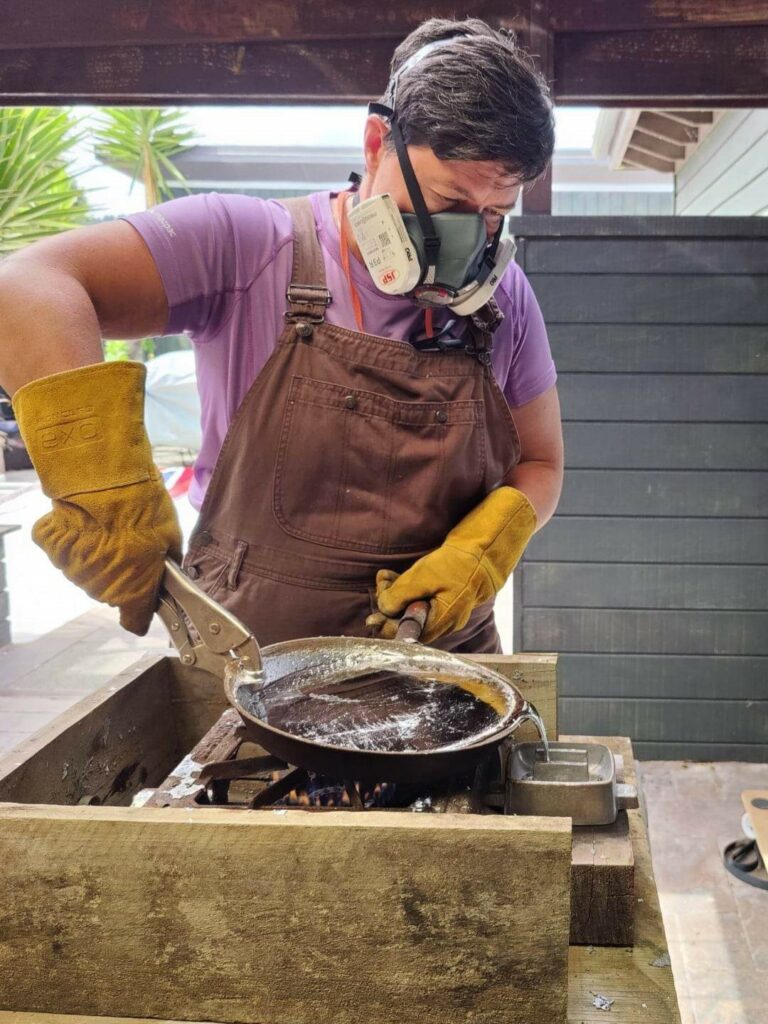
All of our ‘catch’ is then sorted and the sinkers collected and melted down into large blocks to clean the lead. Eventually this is melted again and poured into 1.5kg moulds for dive weights.
So if you are buying weights from Dive HQ you know that you are completing the cycle – removing marine debris, recycling and reusing for many years to come.
A BIG shoutout to Duncan and Ronel, two of our dive club members, making a positive difference in our local environment
